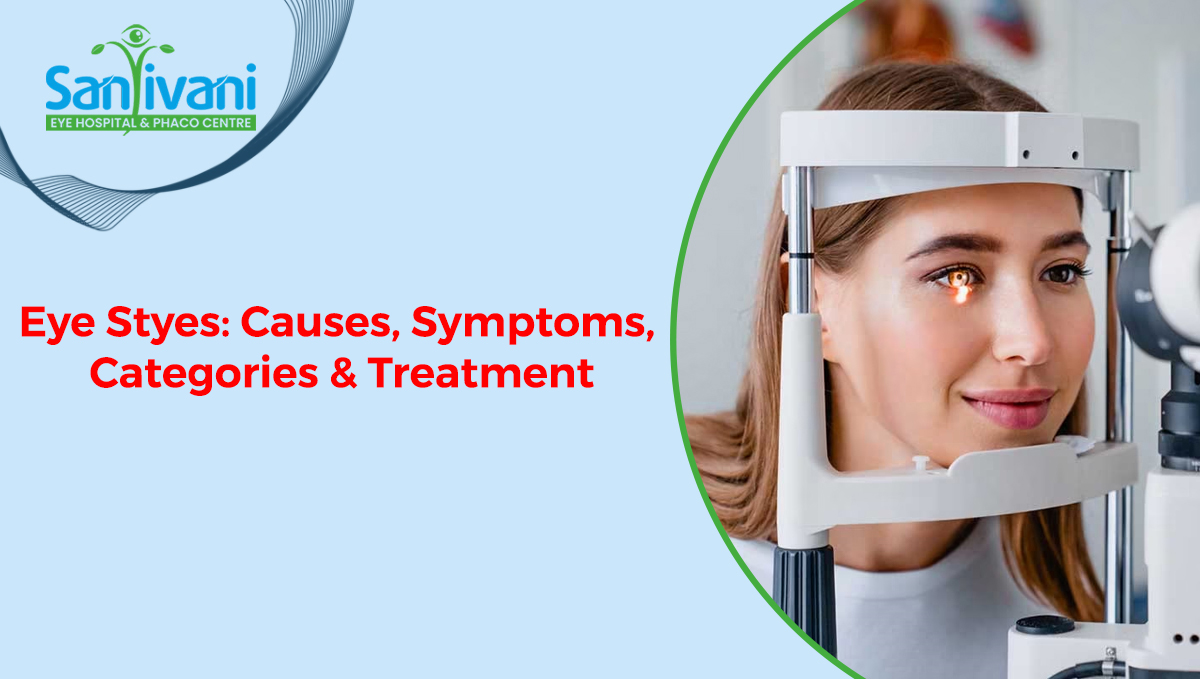
Eye Styes: Causes, Symptoms, Categories & Treatment
What Is Eye Stye?
A stye is an eyelid inflammation brought on by a tiny pustule. It goes by the names Sty and Hordeolum as well. There is a painful, red bump on the edge of the eyelid due to a localized infection of the lid. Most frequently, Staphylococcus bacteria are the source of the infection. It can occur in one of the tiny oil glands inside the eyelid (internal hordeolum) or at the base of the lash (external hordeolum). The lump resembles a boil or pimple and is red and painful. In the anatomy of the eye, some Eye Styes may appear on the inside, even though the majority develop on the outside of the eyelid.
Regarding Eye Styes, there are seven things you should be aware of:
- Pain, swelling, redness, and tenderness are the initial symptoms.
- There are no visual issues brought on by sties.
- Bacteria called Staphylococcus cause styes.
- They spread quickly.
- Most stitches heal by themselves.
- Never try to "pop" a Stye.
- Styes may be accompanied by other eye issues.
- You should see the Best Eye Doctor Ahmedabad if a stie affects your vision or lasts longer than a week.
- Usually, sties only impact one eye at a time.
- An over-the-counter pain reliever and a warm compress are two common home remedies for styes.
The majority of the time, sties heal on their own in a week or less without the need for medical attention. External sties, or those that are not inside the eyelid, can produce pus and turn yellow. Internal eye sties are more painful and typically cause discomfort when they occur inside the eyelid.
A warm, moist, gentle compress applied to the eye stie facilitates pus release and reduces discomfort and swelling. A syndrome may recur.
Causes of Eye Styes
- 1. putting on makeup after its expiration date
- 2. failing to clean your eyes before bed
- 3. not disinfecting contact lenses before putting them on
- 4. handling contact lenses without properly washing your hands first
- 5. Eye sties are more common in adolescents, but they can affect anyone at any age. Other contributing factors include inadequate nutrition and sleep deprivation.
Styes can occasionally develop as a side effect of blepharitis, an inflammation of the eyelids. Though it occasionally occurs as a side effect of Rosacea, blepharitis is typically brought on by a bacterial infection. a skin ailment that is inflammatory and mostly affects the face.
Symptoms of Eye Styes
The patient will experience pain from a tiny red lump on their eyelid that may cause their eye to water and turn red. It may occasionally resemble a pimple. Seldom do eye sties affect both eyes simultaneously. Usually, a person will have one eye affected by a Stye. On the other hand, it is extremely uncommon for there to be more than one Stye in either eye.
Eye sties symptoms can include:
- a lump on the eyelid, swelling of the eyelid, pain, redness, and tenderness of the eyes, as well as a burning sensation, the eyelid's drooping, and itching in the eye.
- blurry vision, mucus discharge from the eyes, light sensitivity, tears, discomfort when blinking, and a persistent sensation of something in the eye.
Categories of Eye Styes
In general, Stye comes in two varieties:
- Outside Hordeolum Along the outside border of the eyelid, external eye styes form. They may turn yellow, fill with pus, and hurt to the touch. An infection in any of the following could be the cause of them:
- Relax: While being anxious is understandable, keep in mind that LASIK is a short and largely painless surgery. Trust the medical professionals and your surgeon.
5. Postoperative Care
You'll be given thorough post-LASIK care instructions, which include:
- Using Prescribed Eye Drops: To prevent infection and lessen inflammation, administer the prescribed eye drops as instructed by your surgeon.
- Avoid Rubbing Your Eyes: As rubbing your eyes might impede the healing process, it is imperative to refrain from doing so.
- Attending Follow-Up sessions: To make sure your eyes are recovering properly, attend all scheduled follow-up sessions with your surgeon.